Wipe dust off the record. Pour a glass of wine. Alphabetise your record collection. But don’t sit and stare at the LED lights in the front. That will only frustrate you. When switching on the Copland amplifier, you will need a saint’s patience. Because it takes a while for the sound to become smooth.
But from then onwards, it’s a pleasure to use Copland’s latest integrated amplifier. Which is also their – so far – flagship model with radio valves.
It eliminates the concerns many people may have about valve amplifiers. Yes, it does get hot, but not so hot that you’ll burn your fingers or melt your records if you’re stupid enough to put an LP on the top plate of the CTA407.
Underneath it are four valves, 6550 or KT88. Or, because the CTA407 can actually use most output valves; KT90, KT100, KT120, KT150 – and certainly also KT170. Ole Møller has designed the amplifier to automatically adapt the bias current to the valves that are plugged in, eliminating another concern that some people have about valve amplifiers.
That’s because most valve amplifiers have a bias current that is adapted to a specific type of valve. If you want to use valves other than the KT88 for example, such as the KT150, if the amplifier has that capability, you can find a screwdriver and a multimeter and adjust the bias current yourself.
Hybrid amplifier with qualities that will send shivers down your spine.
An exercise I definitely don’t recommend attempting unless you’re absolutely sure of what you’re doing. With this model, however, you don’t have to worry about this at all.
So many valves…
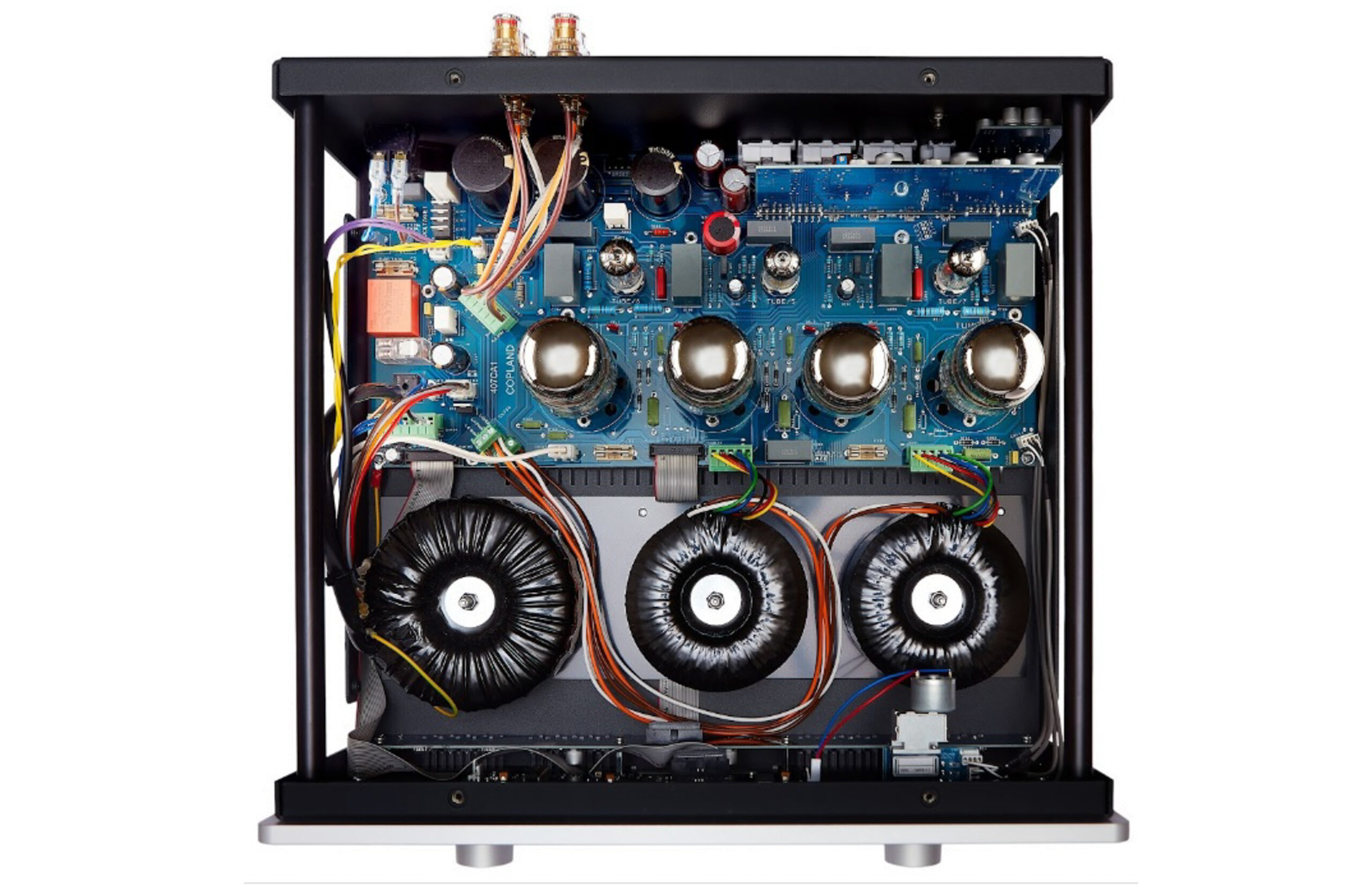
Unlike the integrated hybrid amplifier CSA150, the CTA407 uses radio valves throughout the signal chain.
One ECC83 triode valve and two 12BH7 valves make up the pre-amplifier stage, while four KT88 or 6550 are used in the output section.
The four output valves are paired, one pair for each channel, and work in a push-pull configuration. Together they are capable of delivering more than 100 W of power per channel, but Ole Møller has deliberately chosen to reduce the power to 50 W per channel by increasing the bias current of the tubes in a class A/AB configuration, where the valves operate in class A with a higher power than normal for an AB configuration.
Don't be fooled by the tiny numbers, the magic is present if you just listen.
Auto-bias
It’s the amplifier’s clever bias circuit that makes it possible to switch valves from KT88 to KT150 without being an electronics engineer. If you either need to change valves because the old ones are wearing out or want to test how the KT150 changes the sound, simply switch off the power, remove the cover and insert the new valves. Immediately after, you can switch on the power, wait a little… and then wait some more, and the sound comes on slowly but surely.
No further adjustments are necessary.
The amplifier’s auto-bias shows the status and condition of the valves with 10 LEDs per valve. If something is happening to a valve, it is indicated by the colour of the LED panel. It can be switched off if you don’t want to look at the LED lights while listening to music.
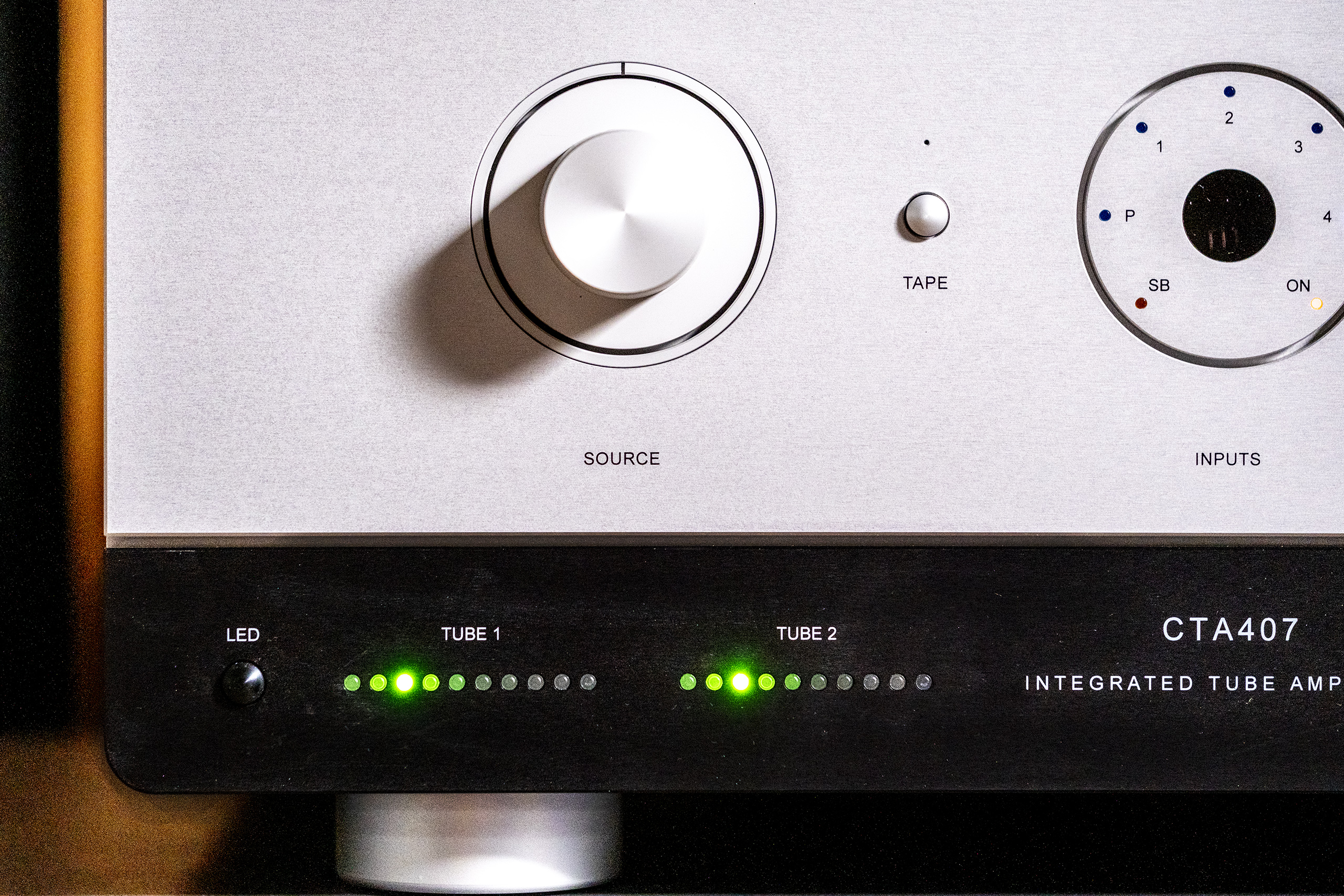
Turntable input
The four line inputs on the back have a tape loop placed between them and the turntable input. It is exclusively made for MM pickups, or MC pickups with high output voltage. A bit strange, I think. I wonder how many of Copland’s potential customers have a turntable with MM pickups? In this class, the vast majority use an MC pickup, but not one with high output voltage, I would venture to say. MMs don’t belong in a high-end preamp, although you can always use a step-up transformer here. That will solve the problem.
Photo: Copland
Powerful and refined
When the amplifier has sufficiently warmed up, this is indicated on the LED panel. It takes a few more minutes before the sound is fully balanced, but then you are presented with an enormously large, rich and, not least, dynamic soundstage. It delivers bass notes with an authority normally associated with much more powerful transistor amplifiers.
It fills the small floorstanding Prodigy5 speakers from PMC with potent bass, and also adds some extra bass extension to Audiovector’s compact R1 Arreté.
The soundstage leans towards a pleasant warm glow, which in my opinion fits the music perfectly. Vocals get more warmth and instruments get more depth. It’s hard to resist, to say the least. I haven’t tried it, but I can imagine that a CTA407 would be a perfect match for a pair of Klipsch Cornwalls, which with a 15″ woofer, tweeter and midrange horn often thrive exceptionally well with good valve amplifiers.
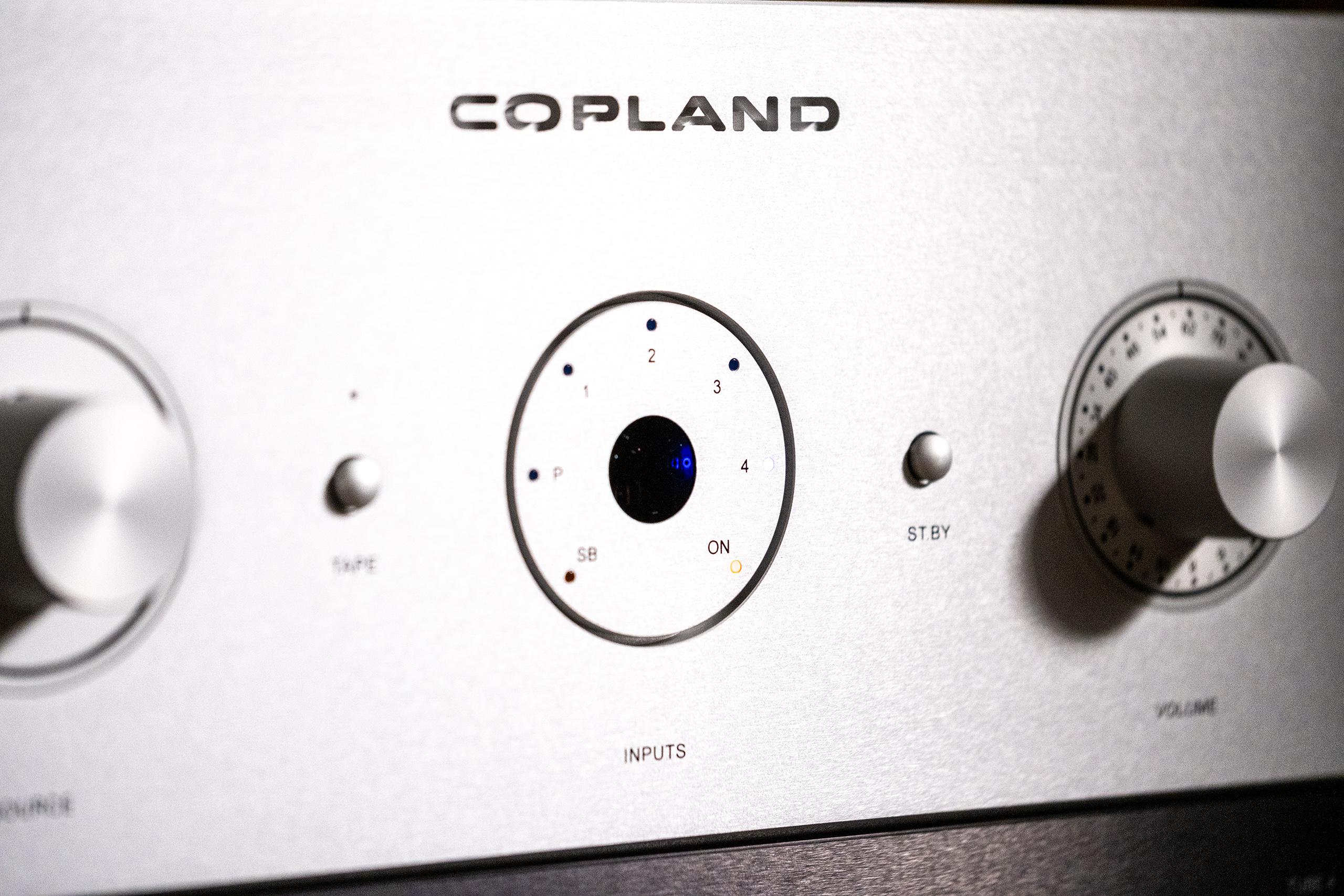
The Copland amplifier also plays wonderfully with the floorstanding Sonus faber Maxima Amator. Although they are a two-way design in a floorstanding cabinet, they deliver a big soundstage with Sonus faber’s familiar organic and natural sound. I really enjoyed Butch & Butch from Keith Jarrett trio Up For It. The percussion and double bass were given enough weight and punch to make the dynamics of the recording sound believable. The piano sound could hardly be reproduced with more power and refinement, and on Scarlatti’s Sonata in C major (K406) I found that the soundstage had a three-dimensionality that didn’t come across as well on Butch & Butch.
Beethoven’s Violin Sonata in A major, with Maxim Vengerov on violin and Alexander Markovich on piano, can sound a little sharp on some speakers. Not here! Together with the Sonus faber speakers, the Copland amplifier creates a soundstage with exceptional clarity and sparkling dynamics. Here, I could simply turn up the volume without the violin cutting my ears.
The Copland amplifier doesn’t have quite the same control over bass frequencies when playing loudly as, for example, the Yamaha A-S3200. It also doesn’t have Yamaha’s excellent MC input, but it does give vocals a well-defined place in the soundstage.
The large Yamaha amplifier puts the music in a flattering light, but can also be brutally honest.
Alright, Okay, You Win, featuring Diana Krall and the late Tony Bennett in a duet, sounds as close as you can get to a VIP seat in the studio during the recording. Bennett’s warm and silky vocals give you goosebumps, and the all-too-brief guitar solo by Gray Sargent sounds like the guitar amps are actually standing in the room with me.
The Copland amp seems more dynamic and plays with more authority in the bass range than, say, the Audio-Research I/50, but it doesn’t have the same endless power as a Rotel Michi X5. But it has other qualities that make it unique.
Valve amplifiers certainly don't have to sound woolly and anaemic. Just listen to the new I/50 from Audio Research.
Conclusion
There are integrated amplifiers that provide greater detail and power, many of which have as many as 14 inputs, DAC and streaming. Many of these can be alternatives to the Copland CTA407, and in some areas they may play even better with even more control and power. But they rarely have the same fluid, lightweight warm glow as a CTA407. An integrated valve amplifier that you can enjoy for decades and that works with a wide range of radio valves. That’s an achievement in itself. So never mind that it doesn’t have a phono input for normal moving coil pickups.

We think
Open and organic soundscape with exemplary timbre. Powerful and potent with plenty of dynamic power. Self-adjusting bias. Appealing design and build quality. Very high-end for the money. No balanced inputs. Only turntable input for MM and high output MC.
6900 €
Specifications
- Type: Integrated amplifier
- Power: 2 x 50 W 8 and 4 ohms
- Technology: Valves (4 x KT88, 1 x ECC83, 2 x 12BH7)
- Connections: 4 unbalanced, tape in/out, turntable
- Turntable input: MM 47 kOhm
- Headphone output: No
- DAC: No
- Network: No
- Frequency range: 10 Hz – 150 kHz (-3 dB)
- Dynamic range: Not stated
- THD: 0.5%
- Signal to noise: 100 dB CD, 96 dB MM, 90 dB MC
- Other: Remote control. Silver coloured or black
- Dimensions and weight: 43.5 x 21.5 x 42 cm/20 kg
- Web: copland.dk
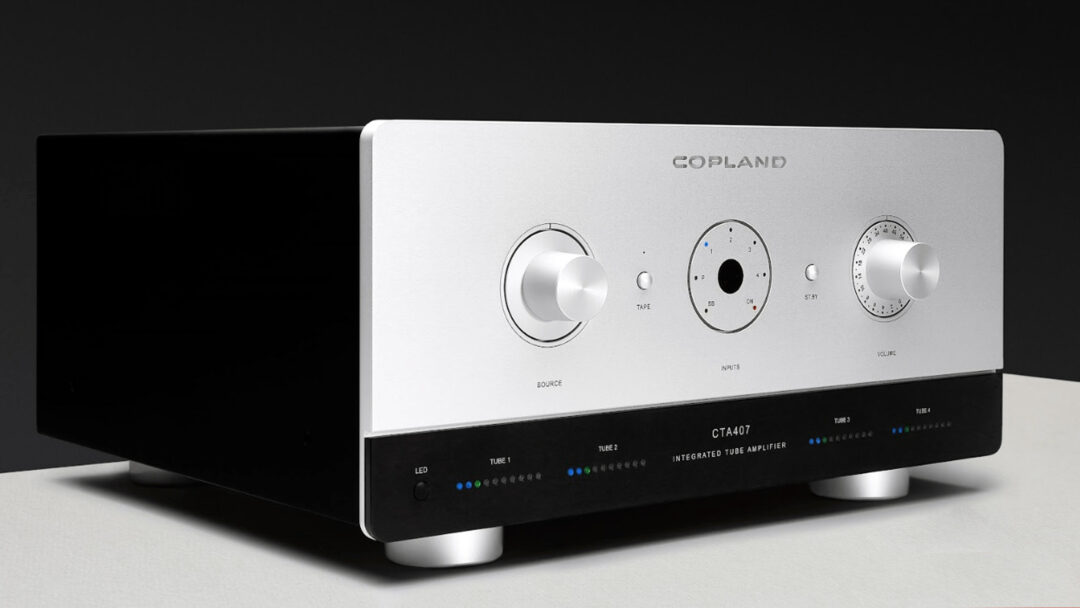

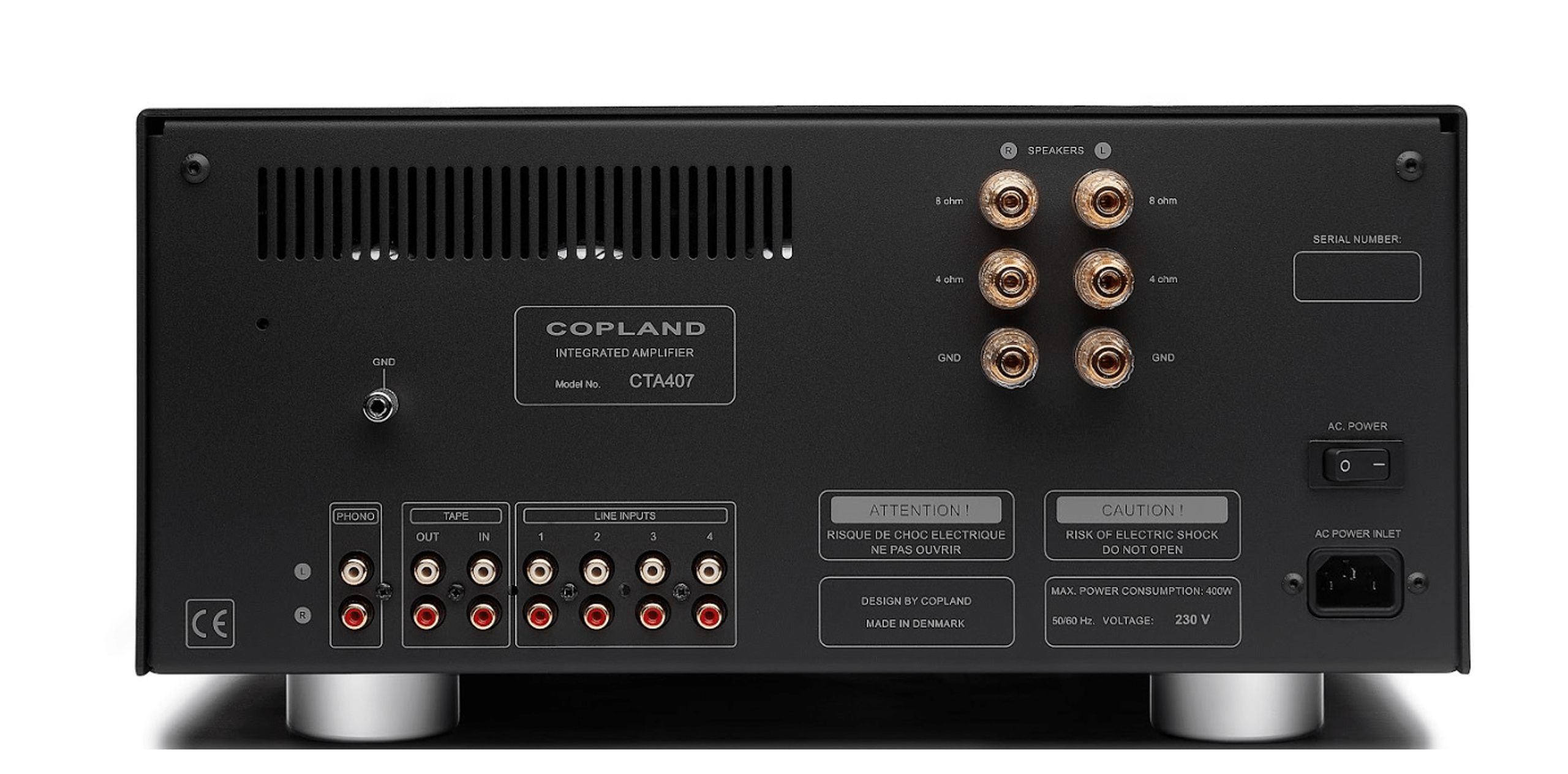
I know it’s not the same type of amplifier but still curious if you have any idea how it’s compares to the Copland csa150